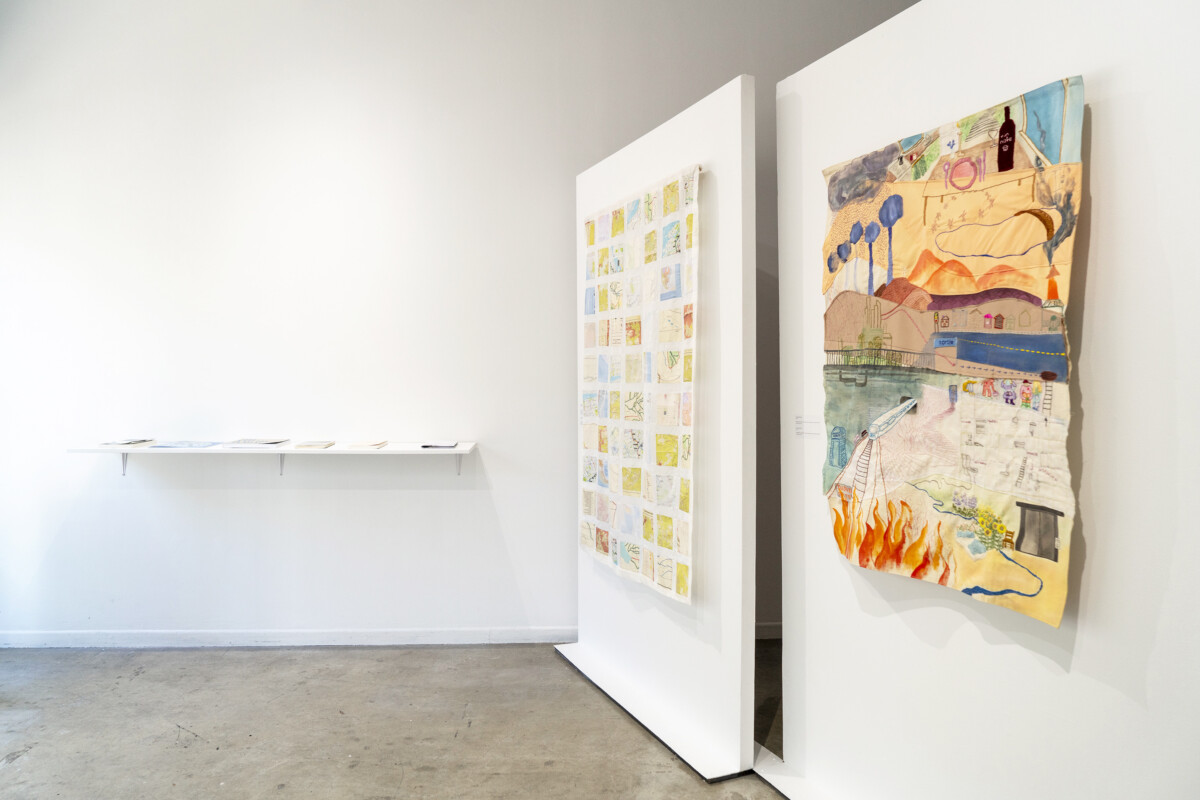Lara’s solo exhibition is open at La Centrale galerie Powerhouse.
Inside everyone’s head is a map. It tells us how to get from home to work to school and back again. Maybe it requires some nudging from Google Maps sometimes, but ultimately it guides us through our corner of the world, and it is always changing.
“Autogéographies” by Tania Lara, exhibited this fall at La Centrale galerie Powerhouse, graciously offers its viewers a look inside the artist’s personal map. Lara questions the assumed authority of the map by carefully embroidering tapestries with parts of her own mind’s map. Her work combines textiles and personal narrative while simultaneously stitching together disparate parts of visual art, geography and philosophy.
A feminist, artist-run space dedicated to the dissemination of multidisciplinary artistic practices, La Centrale is the ideal locale for Lara’s project. Founded in 1973, the gallery is one of the first artist-run spaces in Canada and has a long history of putting artists first and encouraging experimentation. Their archives are housed at Concordia University and are accessible online and in person at the Vanier library on Loyola’s campus.
“Autogéographies” combines textile, installation, and video work resulting from a research-creation project undertaken in part during the artist’s time pursuing a master’s degree in visual and media arts at UQAM.
Throughout the exhibition, Lara focuses on the idea of porous borders, bringing into question the authority bestowed upon borders and exploring the liminal space between them. The gallery has a soft, gauzy feeling created by the semi-opaque material of the flowing tapestries that take up most of the space. Displayed with videos of hand-drawn topographic lines projecting on top of them, the works are in constant flux, resisting the static display of classical maps.
These pieces move with the breeze of people passing by and change according to the projections. Motifs of home take the form of place-settings with knives and forks, windows, checkered kitchen floors and flowers which are peppered through the tapestries, giving the exhibition a playful feel.
The exhibition as a whole is set up on a diagonal axis, further throwing the idea of a guiding map into question by tipping the axis of the North-South cardinal points. Greeting the viewers as they enter are two textile pieces, installed side by side on a diagonal wall.
The first textile piece, “Autogéographies 1 (2021),” is one of the smaller ones in the show. It is a quilt showing multiple scenes including a dinner table, a moving train, a garden, a fire, and finally hills receding into the distance, all in a colour palette of oranges, blues, and greys.
The second, “Autogéographies 2 (2021)” is another quilt in grid formation with each panel showing a different map, some with handwritten interventions on top. Together the two pieces set the tone for the show by playing with the idea of a map and rendering it soft in its materiality and personal in its content.
One of Lara’s noted influences in the project is Caribbean philosopher Édouard Glissant’s theorization of opacity as a response to colonial intervention. He questions the necessity for the transparency found in Western thought, and proposes opacity—the inability to see, the unknowable—as a method of self-determination, as though to say, you don’t need to know all of me to exist with me.
Glissant writes in his seminal text Poetics of Relations, “opacities can coexist and converge, weaving fabrics.” Indeed, Lara weaves together opacities, allowing for moments of both transparency and obfuscation. Mapping is always an act of translation, from 2D to 3D, from the land beneath our feet to the pixels of the cell phones between our hands. Lara’s personal map is on display, and the key to its translation is just beyond our grasp. Perhaps it will always remain that way.
“Autogéographies” is ongoing until Nov. 9, 2023 and is free to attend.
